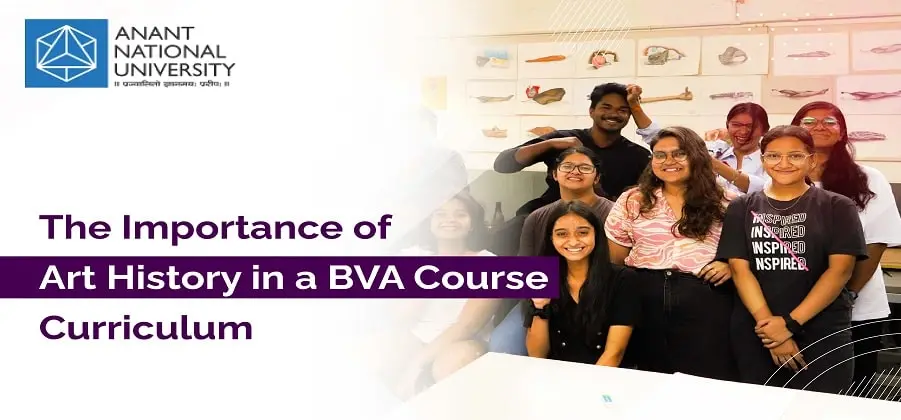

One of the core courses that every BVA student has to study is Art History. Art History is usually taught in different modules or semesters, covering different periods and regions of Art History, such as ancient art, mediaeval art, Renaissance art, modern art, Indian art, etc. But why is Art History important for a BVA course curriculum?
And how does it benefit the students who want to pursue a career in the creative fields? In this blog, we will explore some of the reasons why Art History is an essential component of a BVA course curriculum, as we dive into what the Bachelor of Visual Arts degree entails.
A BVA course is a four-year undergraduate degree program that offers specialized training in various disciplines of visual arts, such as painting, sculpture, photography, graphic design, animation, filmmaking, etc. This course at Anant National University aims to develop the artistic skills, knowledge and creativity of the students, as well as prepare them for the professional opportunities and challenges that they’ll face in the visual arts industry.
A BVA course typically consists of two parts: core courses and elective courses. The core courses include mandatory subjects that cover the fundamental aspects of visual arts, such as drawing, colour theory, composition, perspective, etc. Elective courses, on the other hand, consist of optional Bachelor of Visual Arts subjects that allow the students to choose their area of interest and specialisation.
For more BVA course details, check out the table below.
| Course Name | Bachelor of Visual Arts (BVA) |
| Level | Undergraduate |
| Duration | 4 years |
| Mode of Examination | Semester System |
| Eligibility Criteria | 10+2 passed with a minimum of 50% marks |
| Admission Process | Design Aptitude Test |
| Specialisations | Painting, Sculpture, and Multimedia |
Art History is the study of the visual arts in different cultures, periods or contexts. It helps us to understand how art reflects and shapes human experiences, values and identities and appreciates the diversity and richness of artistic expressions across time and space.
The reason why Art History is an integral subject not only for a BVA but also for similar creative courses like a Bachelor of Arts in Visual Arts is because it is more than just a collection of facts and dates about artworks and artists. Rather, Art History reflects a way of thinking critically and creatively about art and its relation to society, culture and history. Art History can enrich the learning experience and outcomes of a student pursuing a BVA degree in many ways.
Here are some of the reasons Art History is one of the main BVA course subjects:
Also Read: The Best Ways to Prepare for a Career in the Visual Arts
Studying Art History in a BVA course can also pose some of the following challenges for students who may not be familiar or comfortable with the subject:
Despite the challenges that studying Art History in a BVA course may entail, there are some ways that students can overcome them and make the most out of their learning experience:
Also Read: The Future of Visual Art: Trends and Predictions
Art History is an important and relevant subject for students pursuing a BVA course in India. It can offer many benefits for their artistic practice, critical thinking, communication skills, cultural awareness, and career prospects. It can also pose some challenges to their learning experience, such as being overwhelming, boring, or biased. However, these challenges can be overcome by using various strategies and resources, connecting Art History to their own interests and practice, and acknowledging and addressing the issues of representation and inclusion in Art History.